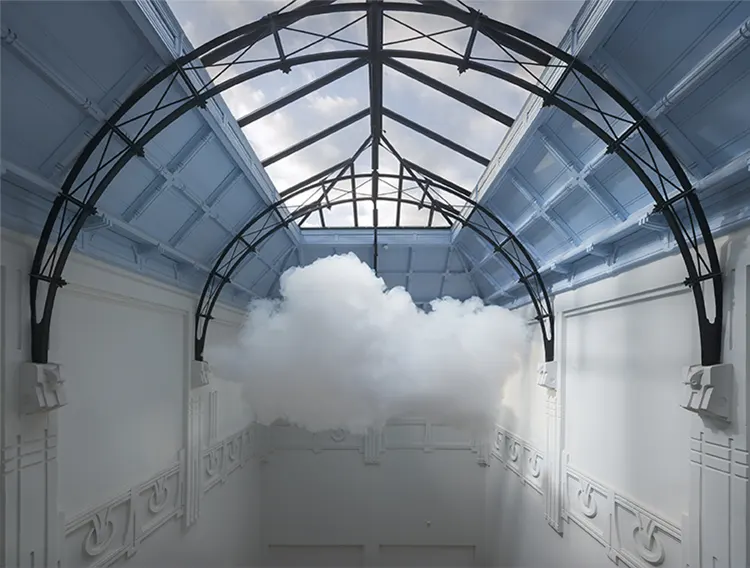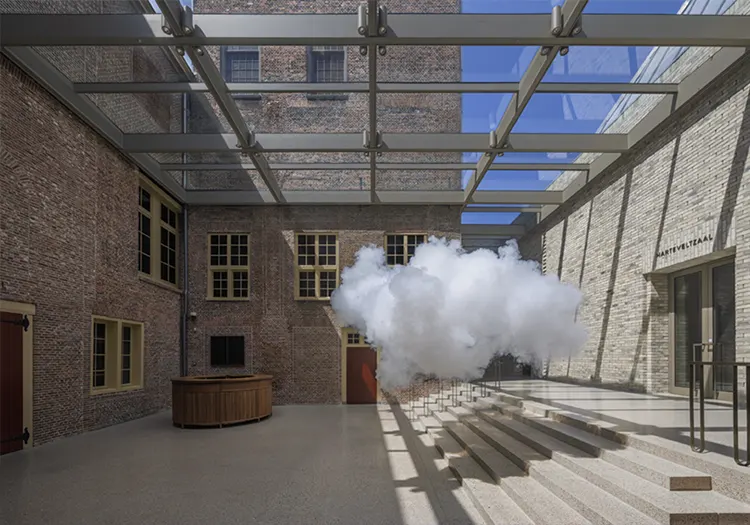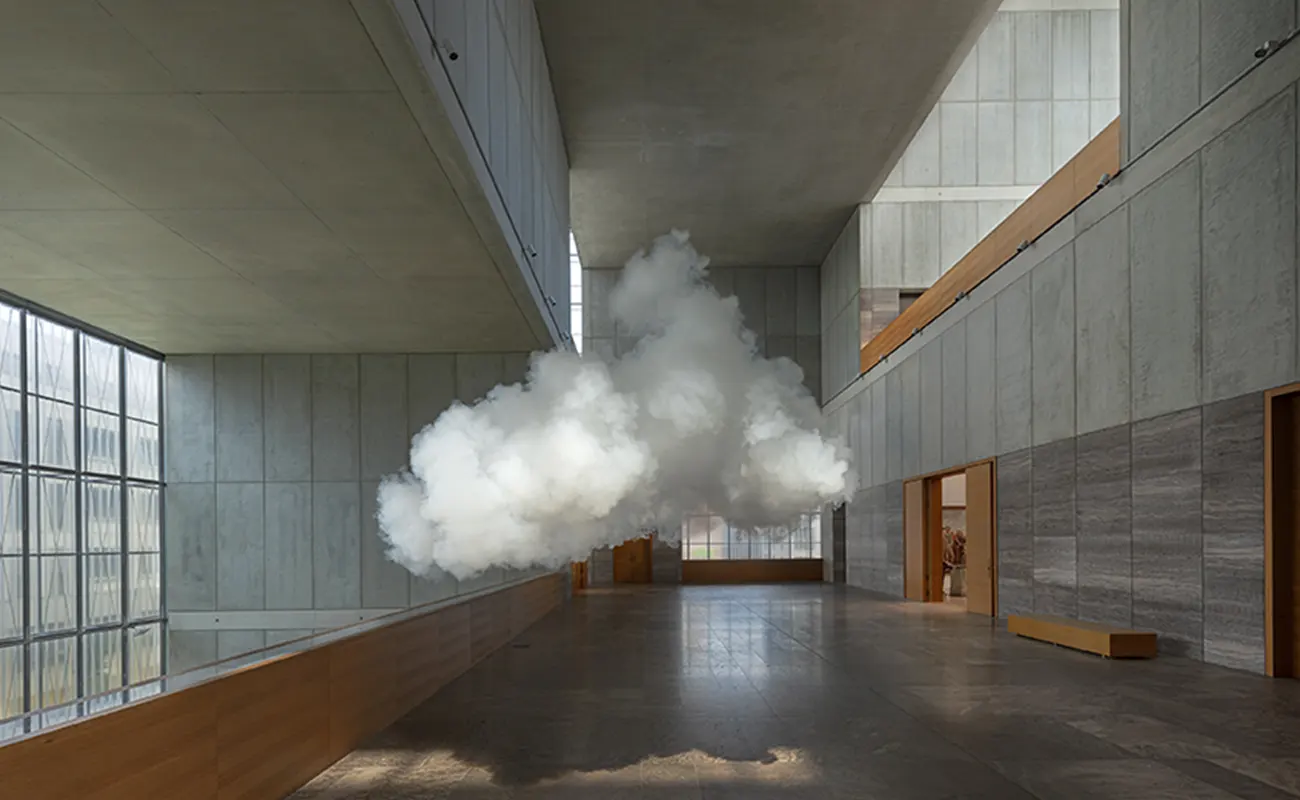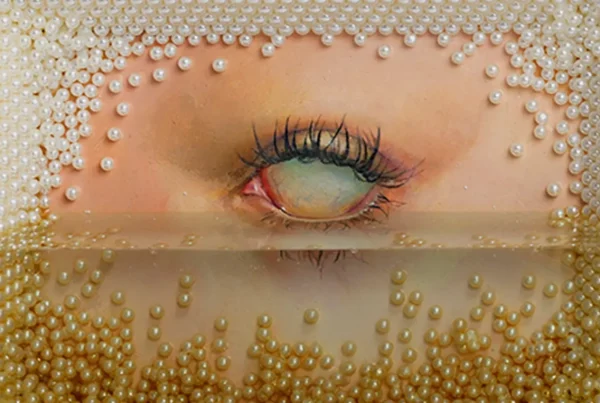“The cloud is not durable, it’s changing, growing and breaking apart.”
From Architectural Passion to Sculptural Mastery
Berndnaut Smilde is a visual artist operating out of Amsterdam. His artistic portfolio encompasses a wide range of mediums, from sculptures and installations to evocative photographs. Notably, Smilde is renowned for his pioneering efforts in manifesting clouds within various indoor settings.
In the early stages of his career, Smilde harbored an ardent desire for construction. Although initially drawn to architecture, he soon discerned a craving for a more tactile approach, away from mere technicalities. This yearning drove him into the realm of the arts. His initial foray began with the painting of architectural edifices. This form of expression subsequently metamorphosed into the creation of intricate sculptures and immersive installations. Post completion of his bachelor’s program, Smilde undertook advanced studies at the master’s level with a predominant focus on sculptural designs. This academic phase marked a time of profound exploration, as he delved deep into a plethora of materials, crafting spatial nuances and disruptions.

The Genesis and Journey of the Indoor Cloud
Berndnaut Smilde’s journey into innovative artistry began with valuable experiences in artist-driven settings, enriched by his creative architectural additions. His imagination soared when he conceived the revolutionary idea of creating an indoor cloud. This breakthrough opened up a world of possibilities, propelling him onto international adventures. Smilde tackled cutting-edge projects in places he might never have discovered otherwise. Along the way, he teamed up with a wide array of professionals—from scientists and architects to notable figures in fashion design.
Smilde has often used the cloud as a versatile symbol in his work. The cloud’s meaning can change dramatically depending on its setting. For instance, against the ancient backdrop of a chapel, it might echo deep religious sentiments. In other scenes, it might symbolize a whimsical element from a landscape painting, represent a fleeting thought, or serve as a hidden veil. Smilde’s enchantment with the fleeting nature of clouds goes beyond this singular theme, influencing a wider range of his artwork. He aims to capture this fleeting essence, asserting that the photograph, which freezes the cloud within a unique setting, becomes the artwork itself.

Inspirations: Romantic Paintings to Light Experiments
Within the confines of Smilde’s studio, quintessential instruments of his craft come to the fore. A table, a computer, indispensable tools, and an eclectic collection of items coalesce, each playing a pivotal role in fueling his artistic endeavors.
Berndnaut Smilde draws profound inspiration from the realm of romantic landscape and seascape paintings. The works of artists such as Andreas Achenbach, who flourished between 1815-1910, have left an indelible mark on Smilde’s artistic sensibilities. He is particularly enamored with the ambiguous instances these masterpieces depict — the elusive ambiguity of a storm that might be either approaching or receding. Such fleeting moments, teetering between extremes, deeply resonate with Smilde for their poignant portrayal of light and formidable power. Additionally, his admiration extends to luminaries like Charles Ross, renowned for his groundbreaking light experiments, Pedro Cabrita Reis with his distinctive perspective on construction, and esteemed figures such as Olafur Eliasson and Gregor Schneider.

Ephemeral Sculptures and Artistic Sentiments
Berndnaut Smilde holds Martin Creed’s “Work No. 252” in high regard. Displayed at St Peter’s Church in Cologne, Germany, in 2000, this enthralling piece features a neon inscription within the church tower. The glowing words “Don’t worry” appear in several languages, offering a comforting message seemingly delivered from above.
Smilde, who primarily engages in sculpture, is renowned for his Nimbus series, which are seen as fleeting sculptures. Their transient nature makes photography the ideal medium to both capture and present Smilde’s notable works.






